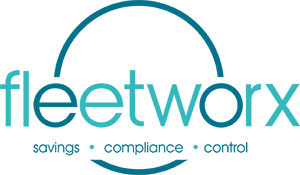When should I consider outsourcing my company car fleet?
If managing your company car fleet is distracting from core business activities - due to size, complexity, or global spread - outsourcing can be a smart move. Even small fleets spread across several markets can benefit from reduced admin burden, professional oversight, and simplified supplier coordination. It also helps manage varied funding types across regions and ensures consistency and transparency. While timing isn’t critical, outsourcing ahead of major fleet replacement cycles can maximise efficiency and return on investment.
What are the pro's and con's of outsourcing car fleet as a business process?
Outsourcing fleet management can cut costs, access global expertise, and free internal resources to focus on core business activities. It also offers scalability as fleet needs change. However, challenges include communication barriers, quality control, data security risks, and dependency on external providers. Success depends on careful planning and resourcing at each stage, before, during, and after outsourcing, covering partner selection, transition management, training, performance monitoring, and ongoing quality assurance.
What does implementing outsourced fleet management look like?
Implementing outsourced fleet management involves a structured handover process to ensure all responsibilities, data, and supplier relationships are transferred smoothly. A dedicated implementation team aligns with your internal stakeholders to define scope, set priorities, and create a detailed rollout plan. The process typically includes phases for engagement, transition, and long-term strategy, covering everything from data collection and supplier coordination to policy development and ESG goals. Depending on complexity, implementation can take 3–6 months, often phased across regions for manageability.
How much does it cost to outsource company car fleet management?
Key factors affecting cost include the number of countries, suppliers, funding types, and vehicle replacement cycles. While there’s an upfront investment, outsourcing is designed to deliver a strong return - by reducing internal workload, centralising data, streamlining policy, and ensuring compliance. For most businesses, the efficiency and headcount savings more than justify the cost.
How do I simplify my international company car fleet?
Managing an international car fleet is complex: suppliers, contracts, policies, and vehicle needs often vary widely between countries. Simplifying starts with centralising data, aligning suppliers, and streamlining policy. Outsourcing to a specialist can accelerate this, offering quick wins in cost savings (often over 20%) and operational control. Over time, this can lead to fewer suppliers, harmonised services, and a global policy framework with local flexibility.
Read the full guide ---> or download the Fleet Leaders Guide: 7 steps to effortless global fleet management
What supplier models are available for outsourced fleet management
There are three main supplier models for managing an international fleet:
1. Multi-bid
Each country or market sources its own suppliers through local tendering. This model encourages local autonomy and competition but can lead to inconsistent service levels and limited central control.
2. Single Supplier (Best by Market)
A central policy guides supplier selection, but the chosen provider can vary by market. This balances local flexibility with some central oversight and allows for a better fit per region while retaining strategic consistency.
3. Single Supplier (Across All Markets)
One supplier manages fleet services globally. This approach offers maximum consistency, streamlined operations, and stronger strategic partnerships, but can reduce local flexibility and increase dependency on one provider.
What is the best replacement cycle for company cars
The ideal replacement cycle depends on mileage, vehicle age, maintenance costs, fuel efficiency, resale value, and employee satisfaction. Common cycles include:
-
3 years: Ideal for companies wanting the latest models and minimal maintenance.
-
4 years: Most common - balances cost with reliability and value.
-
5 years: Offers good efficiency with manageable upkeep.
-
7 years: Maximizes vehicle lifespan, but requires close monitoring of costs and driver satisfaction.
Reviewing your fleet’s performance regularly will help you choose the cycle that delivers the best overall value.
What mobility solutions are alternatives to company cars?
As sustainability and flexibility become priorities, many businesses are exploring alternatives to traditional company cars. Options include car sharing, ride-hailing apps, bike and scooter schemes, public transport subsidies, corporate shuttles, and carpooling. Flexible work arrangements and walking incentives also reduce reliance on vehicles. These alternatives can cut costs, improve employee satisfaction, and support environmental goals, but managing them can be complex, so it’s best to assess needs and explore country-specific options.

